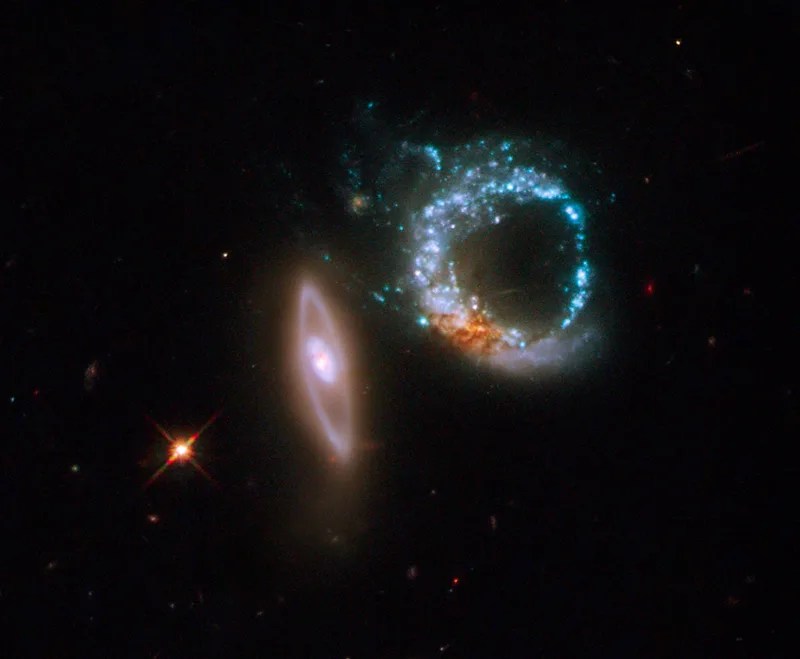2 min read

Release No. STScI-PRC08-37
Credit:
NASA, ESA, and M. Livio (STScI)
NASA's Hubble Space Telescope is back in business.
Just a couple of days after the orbiting observatory was brought backonline, Hubble aimed its prime working camera, the Wide Field PlanetaryCamera 2 (WFPC2), at a particularly intriguing target, a pair ofgravitationally interacting galaxies called Arp 147.
The image demonstrated that the camera is working exactly as it wasbefore going offline, thereby scoring a "perfect 10" both forperformance and beauty.
The two galaxies happen to be oriented so that they appear to mark thenumber 10. The left-most galaxy, or the "one" in this image, isrelatively undisturbed apart from a smooth ring of starlight. It appearsnearly on edge to our line of sight. The right- most galaxy, resemblinga "zero," exhibits a clumpy, blue ring of intense star formation.
The blue ring was most probably formed after the galaxy on the leftpassed through the galaxy on the right. Just as a pebble thrown into apond creates an outwardly moving circular wave, a propagating ring ofhigher density was generated at the point of impact. As this excess density collided with outer material that was moving inward due to the gravitational pull of the two galaxies, shocks and dense gas were produced, stimulating star formation.
The dusty reddish knot at the lower left of the blue ring probably marks the location of the original nucleus of the galaxy that was hit.
Arp 147 appears in the Arp Atlas of Peculiar Galaxies, compiled by Halton Arp in the 1960s and published in 1966. This picture was assembled from WFPC2 images taken with three separate filters. The blue, visible-light, and infrared filters are represented by the colors blue, green, and red, respectively.
The galaxy pair was photographed on October 27-28, 2008. Arp 147 lies in the constellation Cetus, and it is more than 400 million light-years away from Earth.
The Hubble Space Telescope is a project of international cooperationbetween NASA and the European Space Agency (ESA) and is managed byNASA's Goddard Space Flight Center (GSFC) in Greenbelt, Md. The SpaceTelescope Science Institute (STScI) conducts Hubble science operations. The institute is operated for NASAby the Association of Universities for Research in Astronomy, Inc.,Washington, D.C.
STScI is an International Year of Astronomy 2009 (IYA 2009) program partner.







